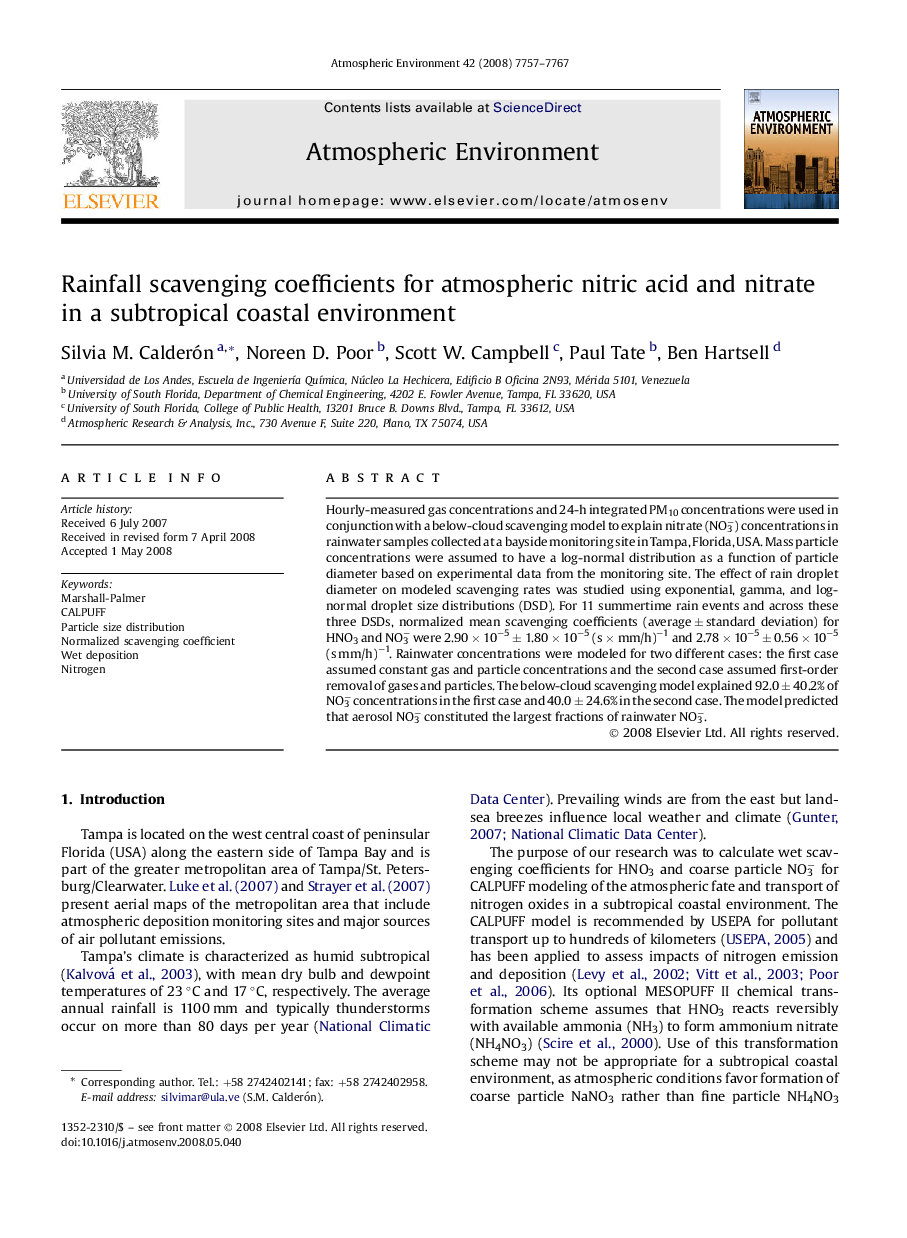| Article ID | Journal | Published Year | Pages | File Type |
|---|---|---|---|---|
| 4441623 | Atmospheric Environment | 2008 | 11 Pages |
Abstract
Hourly-measured gas concentrations and 24-h integrated PM10 concentrations were used in conjunction with a below-cloud scavenging model to explain nitrate (NO3â) concentrations in rainwater samples collected at a bayside monitoring site in Tampa, Florida, USA. Mass particle concentrations were assumed to have a log-normal distribution as a function of particle diameter based on experimental data from the monitoring site. The effect of rain droplet diameter on modeled scavenging rates was studied using exponential, gamma, and log-normal droplet size distributions (DSD). For 11 summertime rain events and across these three DSDs, normalized mean scavenging coefficients (average ± standard deviation) for HNO3 and NO3â were 2.90 à 10â5 ± 1.80 à 10â5 (s à mm/h)â1 and 2.78 Ã 10â5 ± 0.56 Ã 10â5 (s mm/h)â1. Rainwater concentrations were modeled for two different cases: the first case assumed constant gas and particle concentrations and the second case assumed first-order removal of gases and particles. The below-cloud scavenging model explained 92.0 ± 40.2% of NO3â concentrations in the first case and 40.0 ± 24.6% in the second case. The model predicted that aerosol NO3â constituted the largest fractions of rainwater NO3â.
Related Topics
Physical Sciences and Engineering
Earth and Planetary Sciences
Atmospheric Science
Authors
Silvia M. Calderón, Noreen D. Poor, Scott W. Campbell, Paul Tate, Ben Hartsell,
